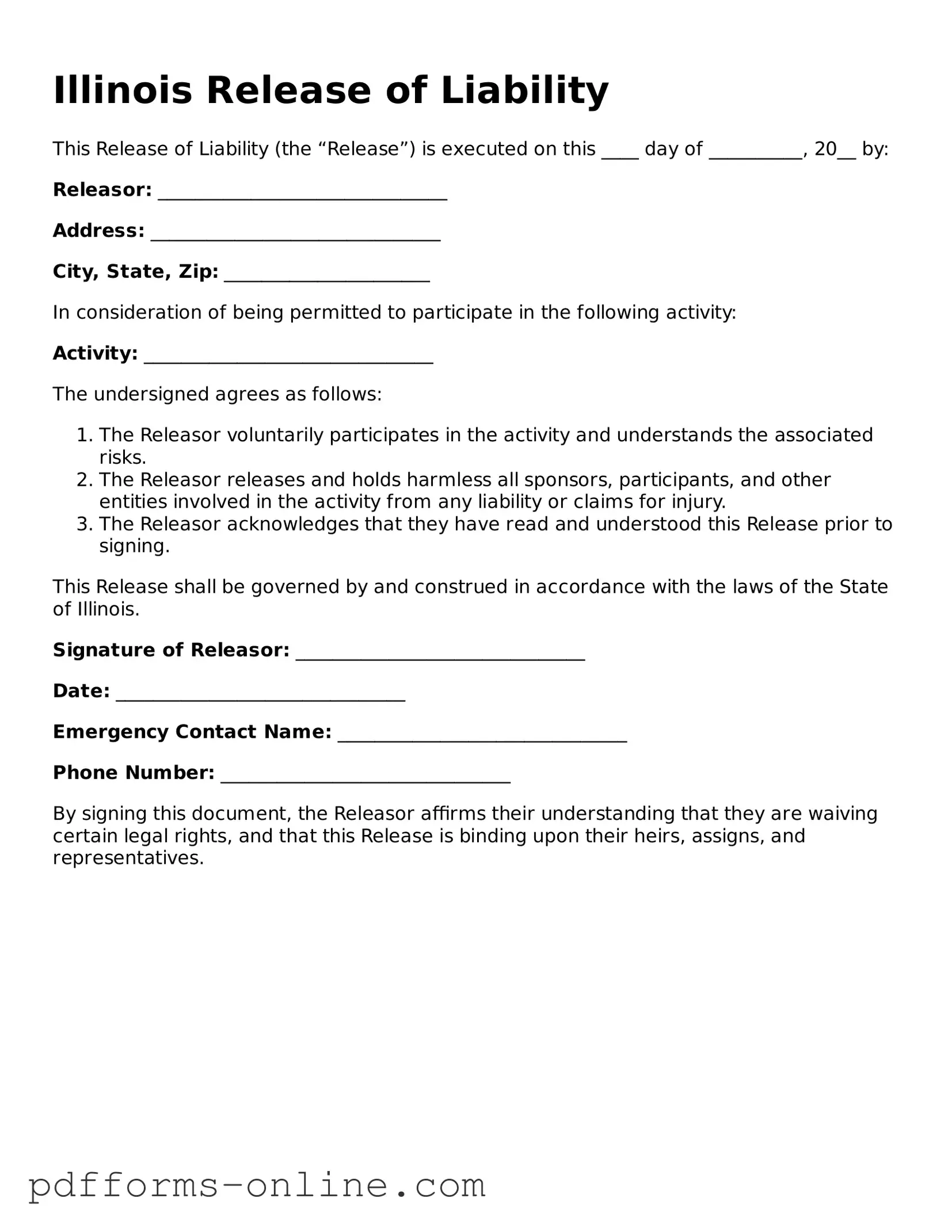Illinois Release of Liability
This Release of Liability (the “Release”) is executed on this ____ day of __________, 20__ by:
Releasor: _______________________________
Address: _______________________________
City, State, Zip: ______________________
In consideration of being permitted to participate in the following activity:
Activity: _______________________________
The undersigned agrees as follows:
- The Releasor voluntarily participates in the activity and understands the associated risks.
- The Releasor releases and holds harmless all sponsors, participants, and other entities involved in the activity from any liability or claims for injury.
- The Releasor acknowledges that they have read and understood this Release prior to signing.
This Release shall be governed by and construed in accordance with the laws of the State of Illinois.
Signature of Releasor: _______________________________
Date: _______________________________
Emergency Contact Name: _______________________________
Phone Number: _______________________________
By signing this document, the Releasor affirms their understanding that they are waiving certain legal rights, and that this Release is binding upon their heirs, assigns, and representatives.
